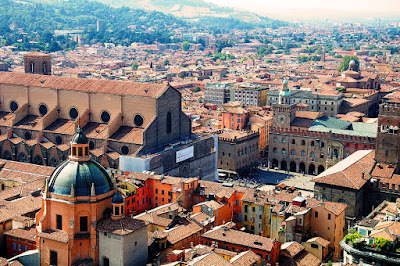Cultural Heritage
Museums Water Resources and the Environment Local Food Wine and Beer Public
Transport Initiatives
Originally
settled in 1849 as an army outpost along the Trinity River, Fort Worth was
one of eight forts assigned to protect settlers on the advancing frontier. The
cattle industry was king for a generation of people working the Fort Worth leg
of the historic Chisholm Trail, which ran from the 1860s to the 1870s when the
Texas & Pacific Railway arrived. In the years that followed, oil and
aviation brought new wealth throughout the region.
The
post-war years found Fort Worth capitalizing on
its strengths as a transport, business and military center. Cultural pursuits
included the development of the city's internationally acclaimed museum
district. The mid-1980s saw the start of a major revitalization of that city's
downtown and the introduction of Sundance Square, a 35-block commercial,
residential, entertainment and retail district. Fort Worth's red brick
buildings and its Western heritage live on as visitors can experience the Old
West beautifully preserved through the Stockyards National Historic District.
Food Brews and Spirits experience cowboy cuisine, trendy farm-to-table, authentic Mexican
and bayou fare. Highlights include beef briskets, pork ribs and locally grown,
organic artisan cheeses, alongside nicely paired wines. Artisanal distilleries
offer straight bourbon, premium blended whiskey and vodka made from black-eyed
peas. Also handcrafted beers, some brewed with milk, honey and sugar,
accompanied by live music and local food trucks.
The Outdoors the Trinity Trails extend through Fort Worth for over 40 miles along
the Trinity River with amenities for hikers, bikers, runners, and horseback
riders with connections to the Stockyards, Downtown, the Zoo and the Cultural
District. The Fort Worth Nature Center and Refuge is a 3621-acre preserved
natural area designated by the Department of the Interior as a National Natural
Landmark Site in 1980. Established in 1964 as the Greer Island Nature Center,
it has small, genetically pure bison herd, a resident prairie dog town, and the
prairie upon which they live. It is one of the largest urban parks of its type
in the United States.
Museums renowned
for their architecture and the quality of their collections, the Cultural
District is home to six museums; Fort Worth is also home to museums
devoted to Western heritage and the city’s colorful past.
The National Cowgirl Museum and Hall of Fame is dedicated to honoring trailblazing women of the
American West. Its multimedia exhibits and historic photographs, papers,
clothing, spurs and saddles tell the stories of women pioneers, ranchers,
performers and rodeo stars.
Log Cabin Village 19th century Texas nestled on three acres and
nine historic structures, Texas history is portrayed through authentic log
homes, a blacksmith shop, a one-room schoolhouse, smokehouse, water-powered
gristmill and herb garden. Experience frontier chores, including candle making,
spinning and weaving.
The Modern Art Museum maintains one of the foremost collections of international modern and
contemporary art in the United States with works by Andy Warhol, Jackson
Pollock, and Mark Rothko are displayed in a concrete and glass building
surrounded by a reflecting pond.
The Kimbell Art Museum is a permanent
collection with major works by Fra Angelico, Velazquez, Bernini, Rembrandt,
Goya, Monet, Cezanne, Picasso, Mondrian and Matisse. It is also home to
Michelangelo's first known painting. The collection comprises Asian and
non-Western as well as European art as well as traveling exhibits on display
throughout the year.
The American Airlines Museum is dedicated to commercial aviation and the world of flight.
Exhibits include hundreds of historical artifacts, photographs, full-scale
aircraft engines and a rare Douglas DC-3 airliner.
Transportation it is easy to get around Fort Worth or travel to nearby and Dallas
and Grapevine.
Bus the T
– Fort Worth Transport Authority – provides extensive service throughout the
city and its cultural attractions.
Rail the
TRE - Trinity Rail Express - connects Fort Worth and Dallas with transfer
access to DFW International Airport.
Air DFW
is only 17.5 miles from downtown Fort Worth via bus, rail or taxi service. From
here, you can reach any major city in the U.S. in less than four hours.
Walking is a wonderful way to experience the city’ entertainment districts and
the Trinity Trails.
Bike Sharing: Bike sharing is an inexpensive, healthy and environmentally
friendly way to get around Fort Worth. Pick up a bike at any of the 40 docking
stations.
Planning Your Fort Worth and Texas
Business Trip or Vacation
Business Trip or Vacation





























